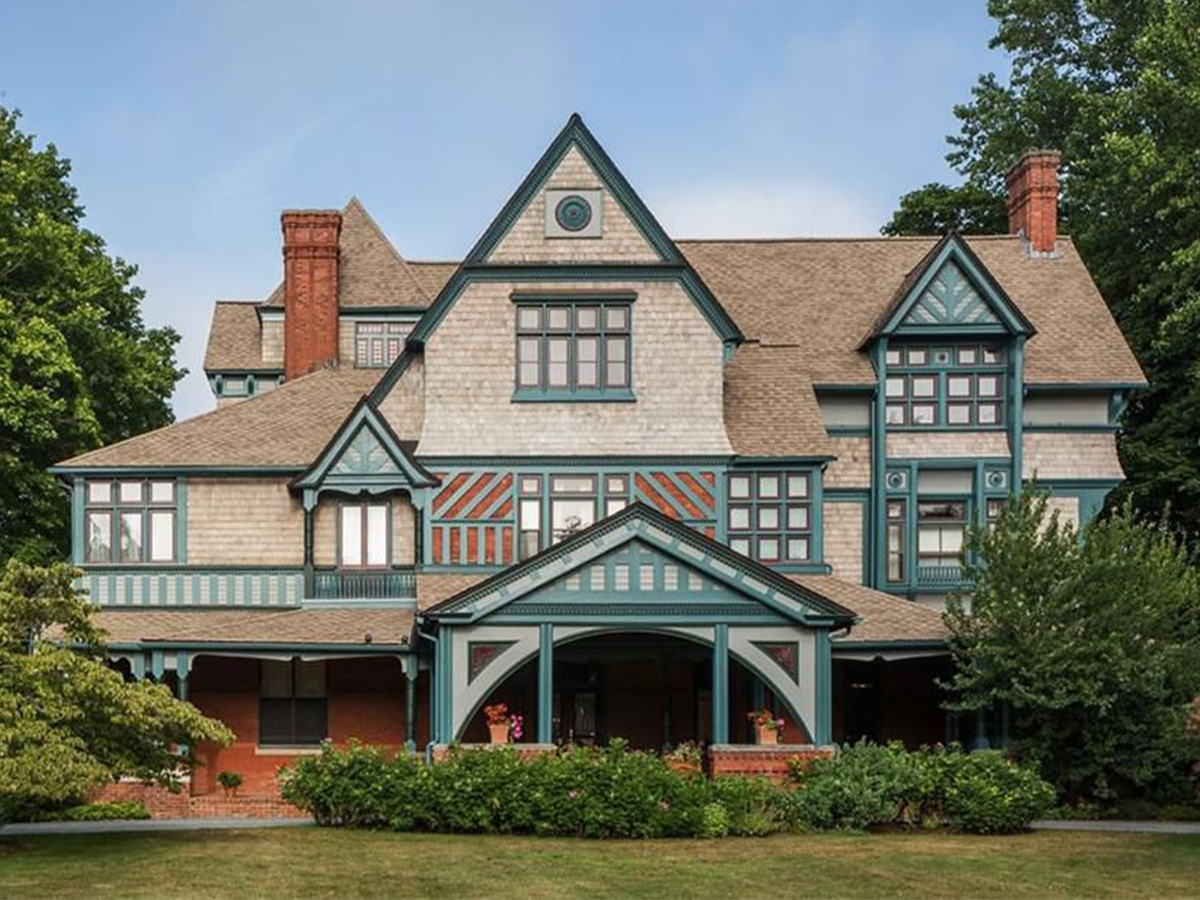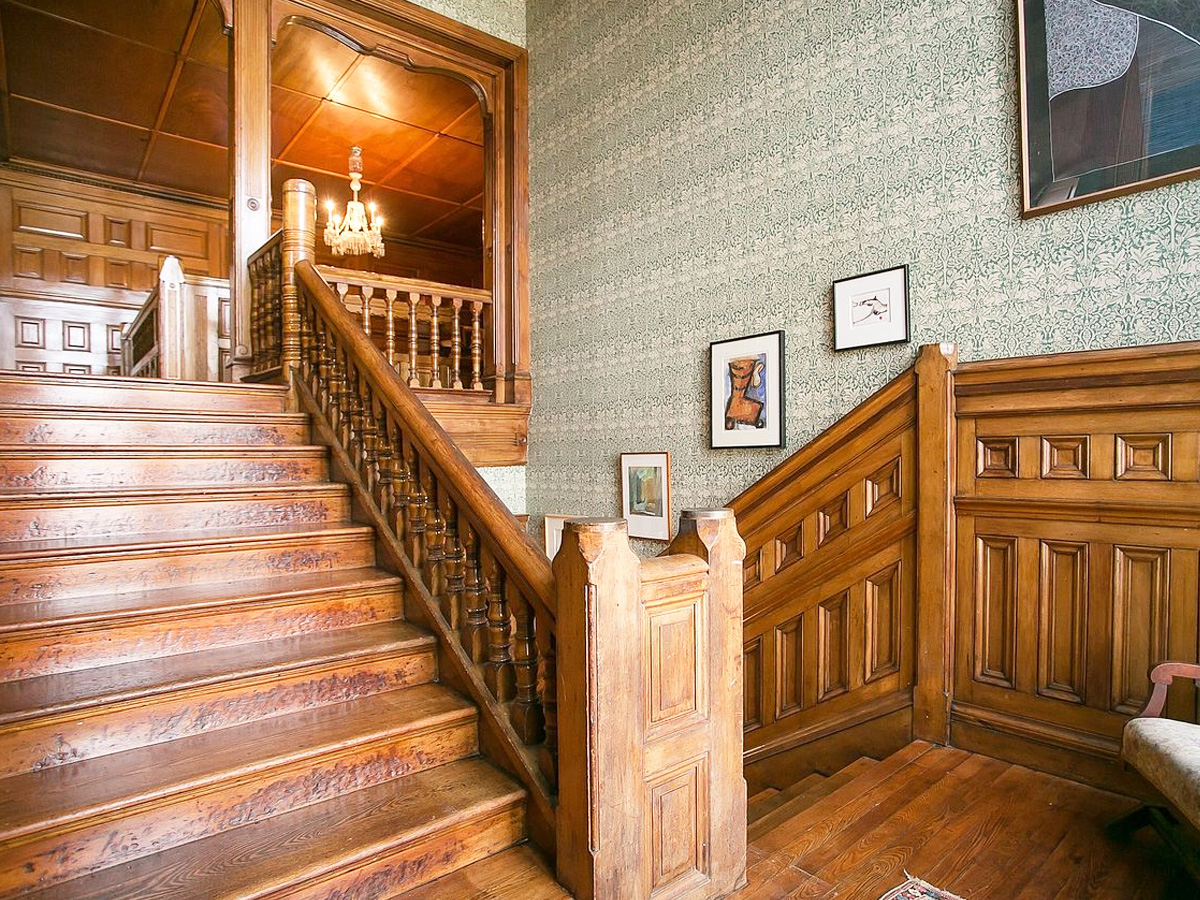
Charles H. Baldwin House (Newport, Rhode Island)
In previous articles, we have discussed many buildings in Newport, Rhode Island that have been listed among the 2500 National Historic Landmarks (NHLs) in the United States. One level below that esteemed honor are structures and objects that have been found worthy of being listed on the “National Register of Historic Places” (NRHPs), of which 80,000 or so exist in the United States, with more being added all the time.

Charles H. Baldwin House in 1933 (Newport, Rhode Island) (Image from National Register of Historic Places)
Newport is blessed with a rich architectural heritage, and the Charles Baldwin House stands as a prominent example. Built between 1877 and 1878, this grand building bears many of the qualities of the Watts Sherman House which was designed prior to it further south along Bellevue Avenue, Newport Grand Street of Gilded Age mansions and palaces. It embodies a transitional style, bridging the Queen Anne Revival and the emerging Shingle Style and its design reflects not only the architectural trends of the era but also the social aspirations and standing of its owner, Admiral Charles H. Baldwin. Unlike many other significant structures that have become house museums, the Charles Baldwin House continues to remain a private single-family residence.

Interior Entrance (Newport, Rhode Island)
When first designed, the Charles Baldwin House was a collaborative effort between architects William Appleton Potter and Robert H. Robertson. Drawing inspiration from the popular Queen Anne Revival Style, they incorporated elements like asymmetrical massing, prominent gables, and a wraparound porch with turned columns. These details evoke a sense of grandeur, befitting Admiral Baldwin’s stature and the ornate aesthetic prevalent during the Gilded Age. The polychromy of half timbers are juxtaposed with planes of natural cedar shingles (hinting at the Shingle Style that was soon to emerge in the work of McKim, Mead, and White at the Newport Casino and the Isaac Bell House that would be built across the street just a few years later).

Interior of the Stairway & Shelve (Newport, Rhode Island)
However, the architects didn’t merely replicate established styles. They embraced a degree of innovation and invention, employing a combination of brick, clapboards, and shingles on the exterior. This innovation added a layer of texture and graphic visual interest, showcasing a shift towards a more informal and picturesque aesthetic. The extensive use of shingles, particularly on the upper stories, became a defining characteristic of the house, foreshadowing the widespread popularity of the Shingle Style in the decades to come.
Beyond its architectural significance, the Charles Baldwin House offers a glimpse into the life and social aspirations of Admiral Baldwin. Built as a summer residence, the house’s size and elaborate details signaled his success and social standing. The spacious interior, designed for entertaining, reflected the emphasis on social gatherings characteristic of the Gilded Age. Notably, large French doors leading out to the expansive veranda facilitated seamless indoor-outdoor living, a concept, which was gaining popularity during this period.

Dining Room Exposing the Beams (Newport, Rhode Island)
The Charles Baldwin House played a vital role in shaping Newport’s architectural landscape. Its prominent location on the northerly part of Bellevue Avenue, a street lined with many grand mansions, placed it near the heart of the city’s social scene at the time of its construction. The house’s innovative design, with its blend of Queen Anne Revival grandeur and Shingle Style elements, offered a compelling alternative to the ubiquitous Italianate mansions of the period before it was built and served as an inspiration for other architects and homeowners, contributing to the further diversification of Newport’s architectural fabric.
Today, the Charles Baldwin House stands as a significant step in the evolution of American architecture during the late 19th century. It represents, along with the Watts Sherman House, a pivotal moment, bridging the gap between the established Queen Anne Revival and the future blossoming of the Shingle Style. The structure was listed on the National Register of Historic Places in 1971 and continues to captivate visitors and passers-by with its bold architectural beauty and historical significance.

Back Side of Charles H. Baldwin House (Newport, Rhode Island)
Looking to remodel your home? Let’s connect.
Join the Architectural Forum to stay up-to-date with architectural news from Rhode Island and abroad.
Ross Sinclair Cann, AIA, LEED AP, is an author, historian, educator and practicing architect at A4 Architecture and lives and works in Newport, Rhode Island. He studied with Professor Scully as an undergraduate at Yale and was a teaching assistant for Robert A.M. Stern at the Columbia School of Architecture in New York. He has worked on dozens of buildings by McKim Mead and White, Peabody and Sterns, and other noted architects of the Gilded Age and has frequently designed renovations and new buildings in the Queen Anne Revival and Shingle Styles.
At A4 Architecture + Planning we are expert at integrating building codes into our designs to provide safer and more long-lasting building solutions for our clients. If you are interested in learning more about what can do for you reach out to us at any time!
Discover more from reviewer4you.com
Subscribe to get the latest posts to your email.





